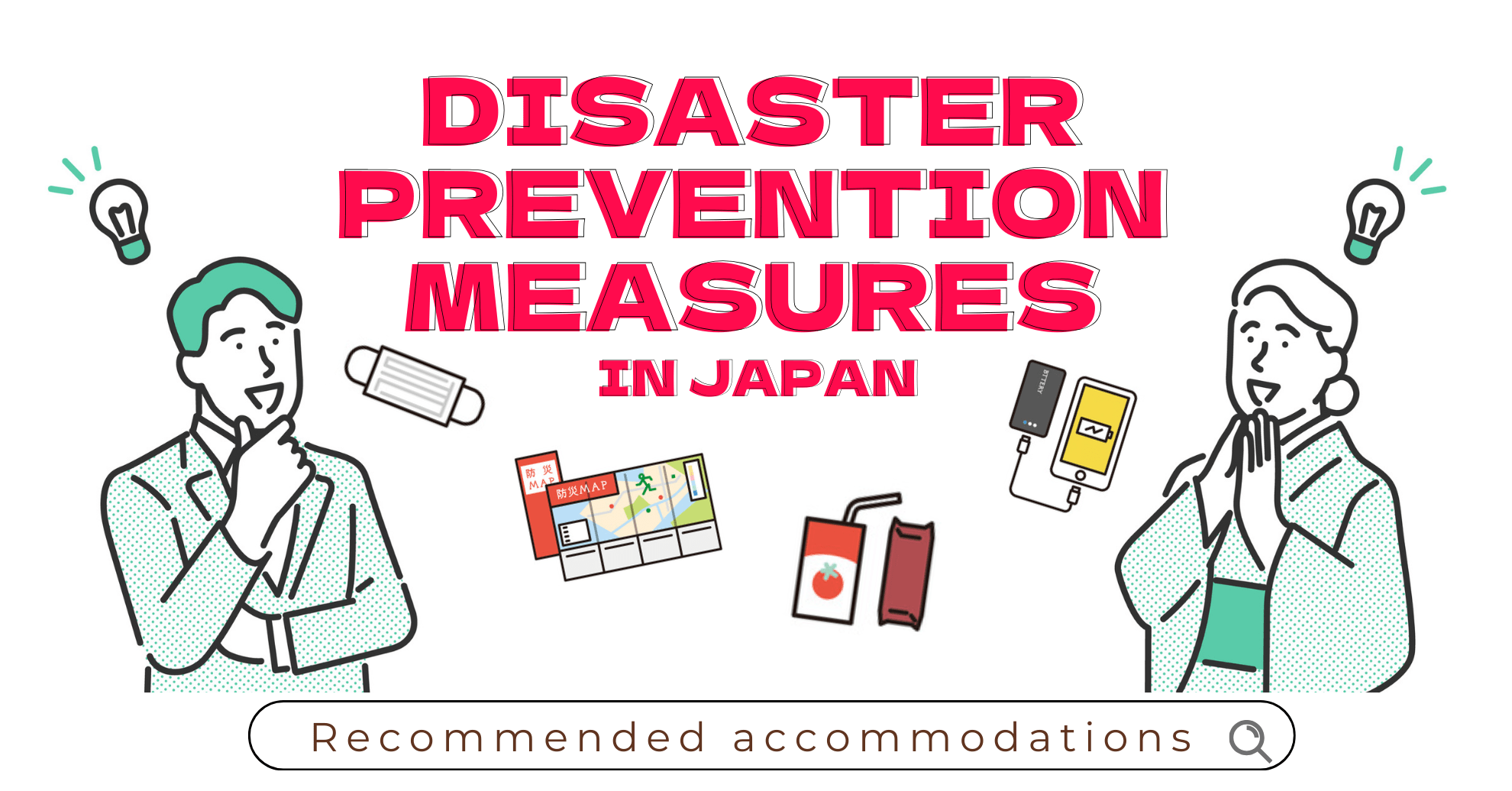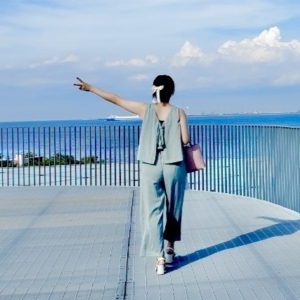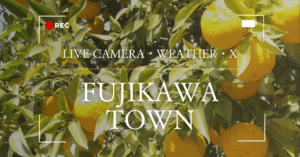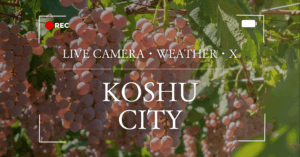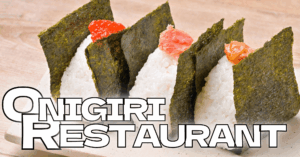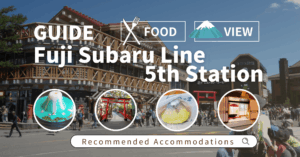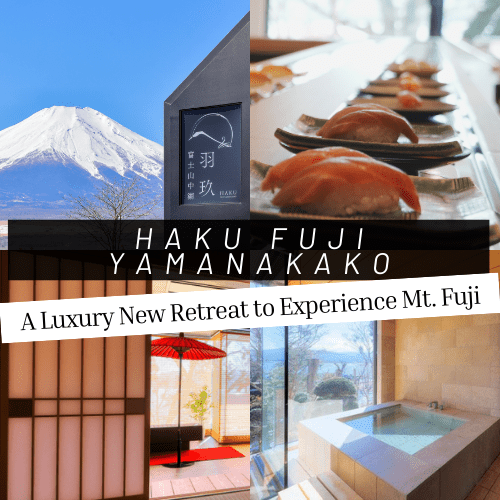Located in the heart of Japan, Yamanashi is a nature-rich region surrounded by some of the country’s most iconic peaks, including Mt. Fuji, the Southern Alps, and Mt. Yatsugatake.
While Mt. Fuji is one of Japan’s most popular tourist destinations, it is also an active volcano that has erupted multiple times throughout history — and experts warn that there remains a potential risk of future eruptions.
One of the possible triggers for such eruptions is earthquakes, which naturally raises concern among travelers visiting the area.
In addition, Yamanashi experiences various seasonal natural hazards such as heavy snowfall in winter and typhoons in summer.
Understanding these potential risks and preparing in advance is essential for ensuring a safe and enjoyable trip.
In this guide, we’ll provide practical disaster preparedness information and emergency response tips specifically for travelers in Yamanashi.
We’ll also introduce several recommended accommodations that allow you to relax comfortably indoors even during bad weather.
Before your next trip, make sure to read through this article — it will help you travel with peace of mind and make the most of your stay in Yamanashi!
Stay Prepared: Recommended Disaster Prevention Websites and Apps
Natural disasters can strike without warning. That’s why it’s important to make use of reliable websites and apps designed for disaster preparedness — so that you can stay calm and act safely even in unexpected situations.
Below are some recommended resources to help you travel safely in Yamanashi.
Yamanashi Disaster Prevention Portal
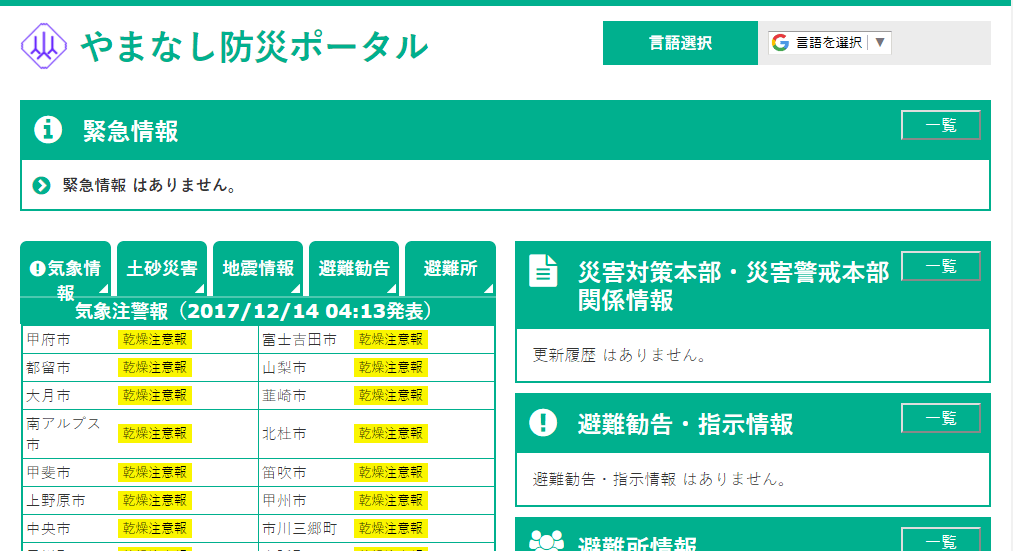
The Yamanashi Disaster Prevention Portal, operated by Yamanashi Prefecture, provides real-time updates on earthquakes, volcanic activity, landslides, and other local disasters.
It’s a user-friendly website that allows you to check the latest disaster information anytime, even while traveling.
The site also supports multiple languages, making it especially convenient for international visitors exploring the Mt. Fuji area.
Be sure to check the site regularly before and during your trip to stay informed.
| Supported Languages | Japanese / English / Korean / Simplified Chinese / Traditional Chinese / Indonesian / Thai / French / Portuguese |
|---|---|
| Information Provided | Emergency alerts / Weather information / Landslide warnings / Earthquake reports / Evacuation updates / Shelter locations |
| URL | https://pref-yamanashi-bousai.my.salesforce-sites.com/ |
Safety Tips
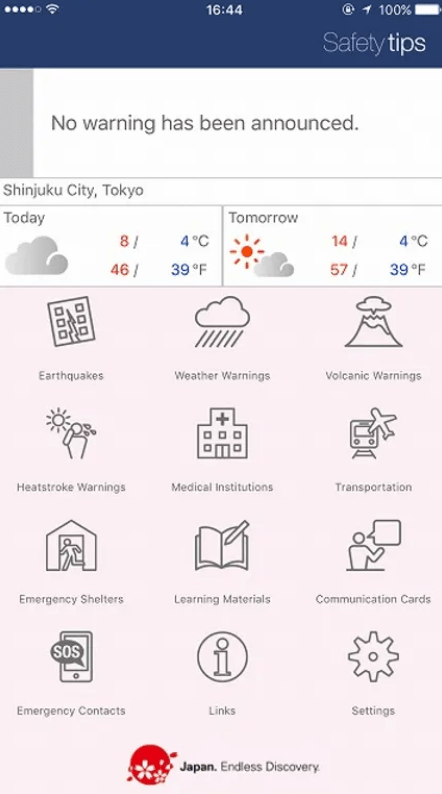
Safety Tips is a disaster alert app supervised by the Japan National Tourism Organization (JNTO), specifically designed for travelers in Japan.
The app delivers real-time push notifications about natural disasters such as earthquakes, typhoons, and volcanic eruptions, helping users take quick and appropriate action when risks arise.
Whether you are staying near Mt. Fuji or traveling across Japan, this app ensures that you stay informed and safe during your trip.
| Supported Languages | Japanese / English / Korean / Simplified Chinese / Traditional Chinese |
|---|---|
| Information Provided | Weather warnings / Earthquake alerts / Volcanic activity / Heatstroke alerts / Medical facility information / Transportation updates / Evacuation guidance / Learning resources / Communication cards / Emergency contact information |
| URL | Android:https://play.google.com/store/apps/details?id=jp.co.rcsc.safetyTips.android&pcampaignid=web_share iPhone:https://apps.apple.com/jp/app/safety-tips/id858357174 |
Essential Emergency Items to Carry During Your Trip
In the event of a natural disaster during your travels, having a few basic emergency items on hand can make a big difference in keeping you safe and calm.
Here are some recommended items to include in your travel kit while visiting Yamanashi.
Mobile Battery (Portable Charger)
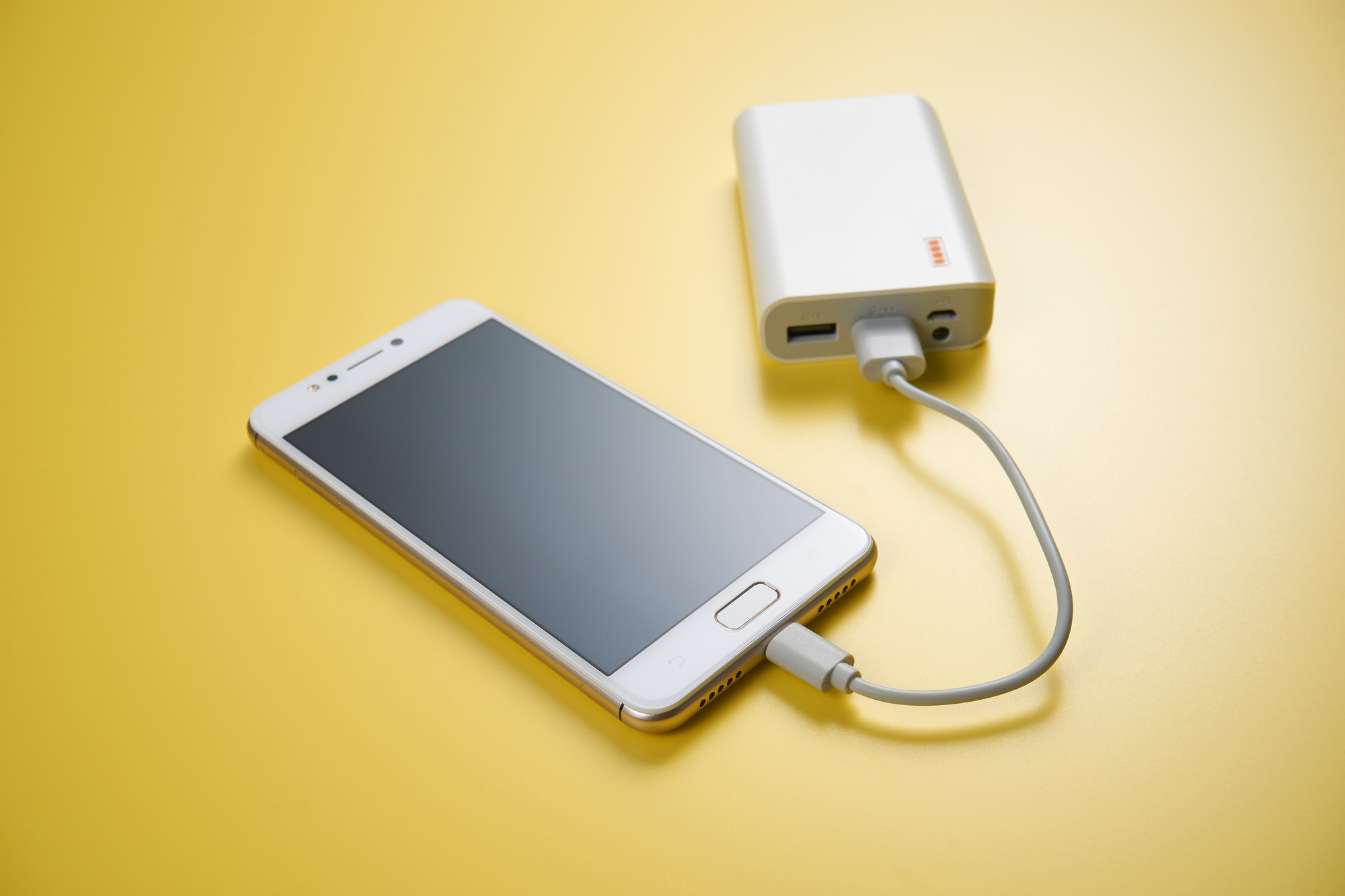
Your smartphone is one of the most important tools during emergencies — it helps you gather information and stay in touch with others.
Especially in the event of a disaster, running out of battery can quickly become a problem, so it’s wise to charge your phone frequently and carry a fully charged portable battery.
If you forget your power bank and find your phone running low while sightseeing, you can use ChargeSPOT, a convenient mobile battery rental service available around Lake Kawaguchiko Station.
The service costs 165 yen for the first 30 minutes, and you can return the battery at any location, not just where you rented it.
For example, you can rent one at Kawaguchiko Station, then return it later at popular spots like the Kawaguchiko Music Forest Museum, Oshino Hakkai, or the Lake Yamanakako area — making it perfect for travelers on the move.
It’s also extremely easy to use:
Simply download the app, scan the QR code on a charging stand, pay online, and plug it back in at any available stand when you’re done.
Because disasters in Japan can happen without warning, it’s best to keep your phone fully charged and always be prepared.
Emergency Food and Drinking Water
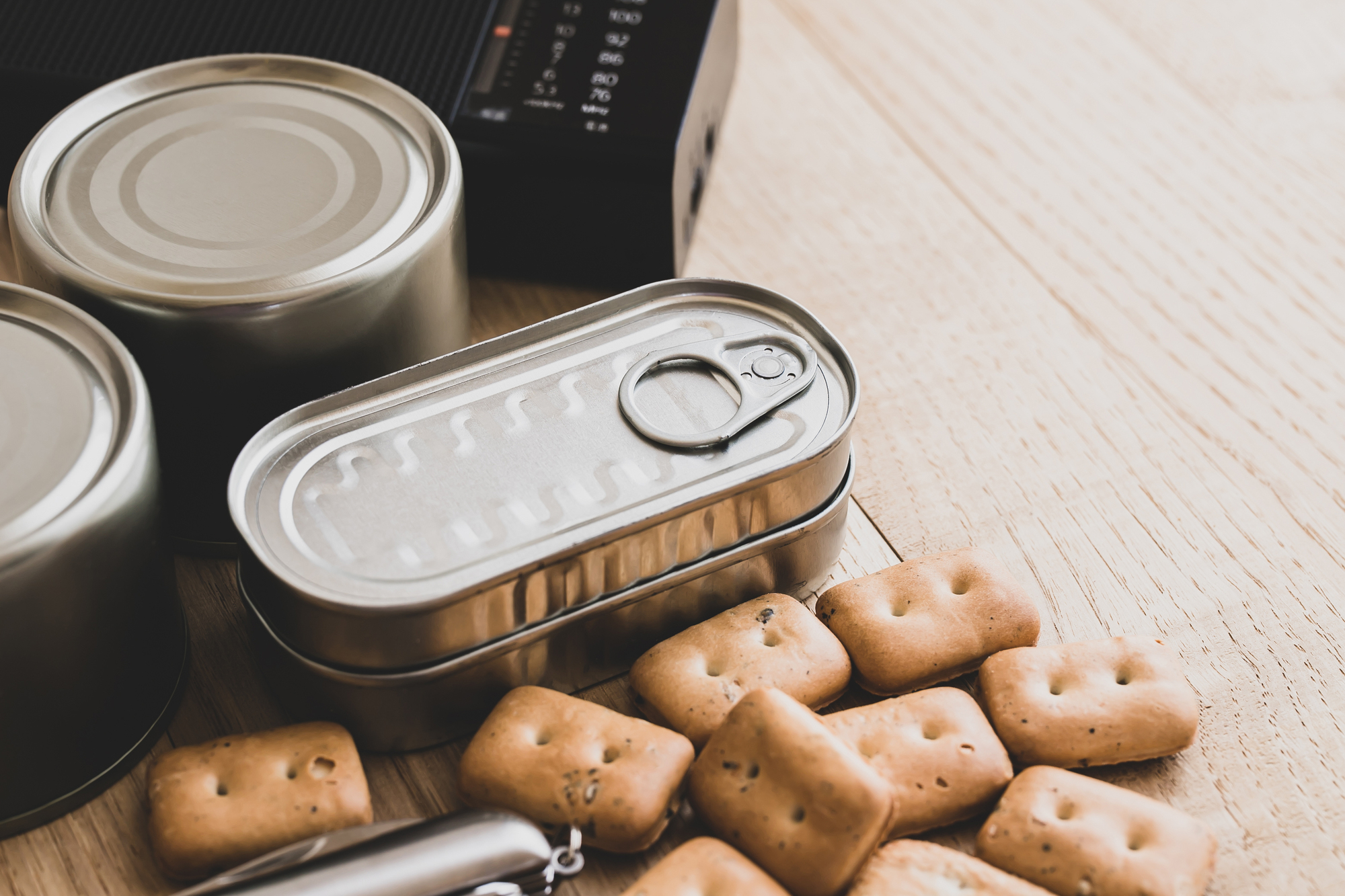
During a disaster, access to food and water may become difficult due to public transportation disruptions, store closures, or supply chain delays.
That’s why having a small supply of emergency food and bottled water can give you peace of mind throughout your trip.
In Yamanashi, you’ll find plenty of convenience stores, Don Quijote, and local drugstores where you can easily purchase items like instant noodles, retort pouches, or biscuits suitable for emergency use.
If you’re lucky enough not to experience any disasters, you can simply take the remaining food home as souvenirs — a practical and memorable keepsake from your trip!
Want to know more about the best shopping spots in Japan for travelers? Click here!

Bandages and Basic Medicine
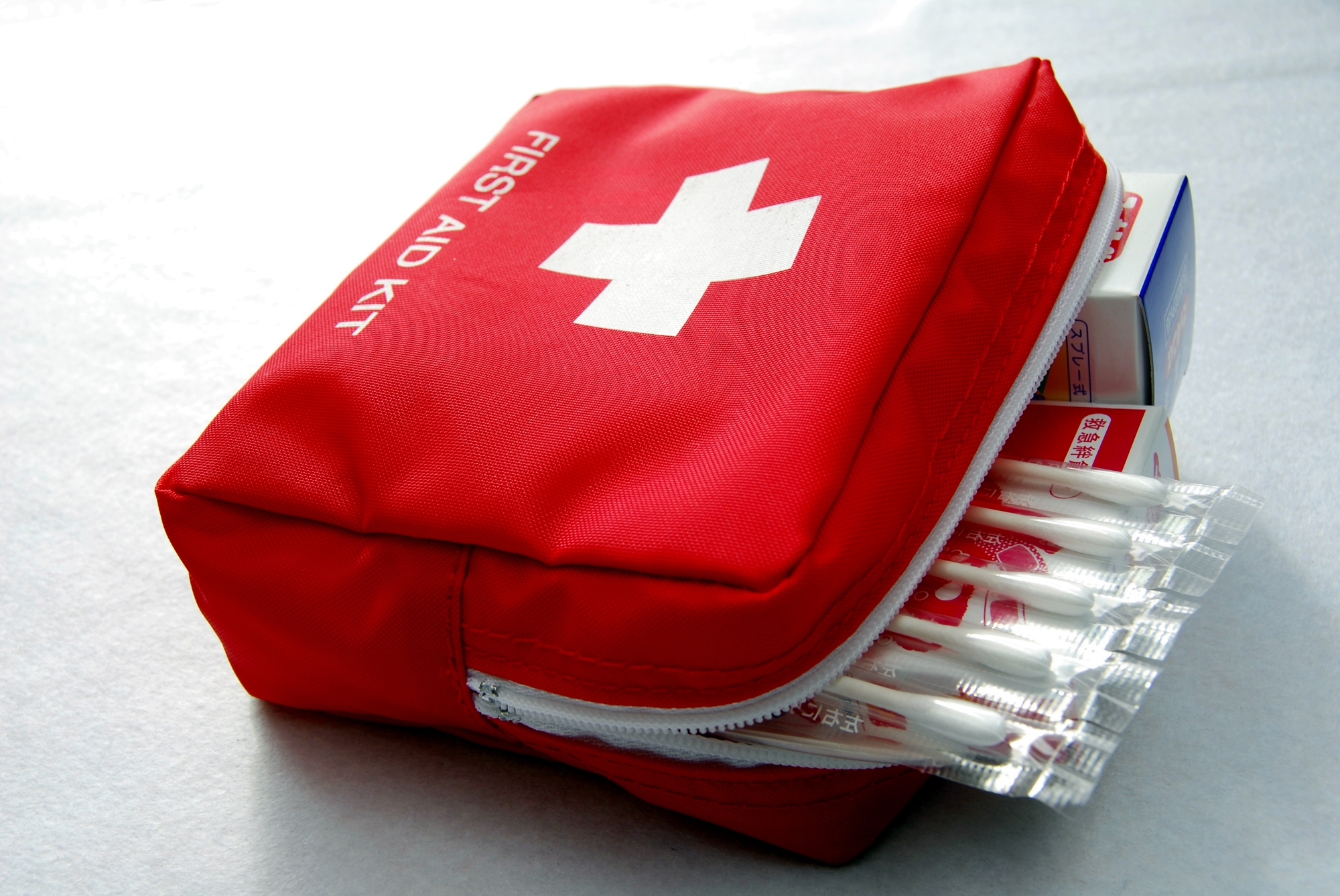
While traveling, it’s always possible to experience minor injuries or sudden illness.
If you have any allergies or pre-existing medical conditions, be sure to bring all necessary medications with you.
Carrying bandages, pain relievers, and basic medicine will give you peace of mind in case you start feeling unwell during your trip.
In the event of a serious accident or emergency, Japan has a reliable nationwide emergency system:
- 110 for the police
- 119 for fire or ambulance services
Both numbers are toll-free and can be dialed from any mobile phone or public telephone.
Most police and fire departments in Japan have multilingual support, including English, Chinese, and Korean.
When you call, you can request assistance in your preferred language, and an interpreter will join the call if necessary.
【📞 How to Make an Emergency Call (Example Dialogue)】
①Dial 110 or 119.
Both numbers are free to call from mobile phones and public payphones.
②Stay calm and state your language.
Say something like:“Hello? English, please.”
This will help connect you to someone who can assist in English or through an interpreter.
③Briefly explain what happened.
For example:“There was a car accident!” “Someone collapsed!”
④Tell them your location.
If you don’t know the exact address, describe a nearby landmark, such as:“I’m near FamilyMart in Shibuya.” or “I’m by Kawaguchiko Station.”
⑤Report injuries if any.
“One person is hurt.” “He is not breathing.”
⑥Follow the operator’s instructions.
Answer their questions calmly, and if they say, “Please stay on the line,” do not hang up.
In case of a major disaster, Japan also offers a Disaster Emergency Message Dial (171) system.
After a disaster occurs, you can use this service to record or check voice messages regarding the safety of your friends and family.
For more details, international visitors can refer to the official guide below:
https://www.mlit.go.jp/kankocho/content/810002938.pdf
Handkerchiefs and Masks
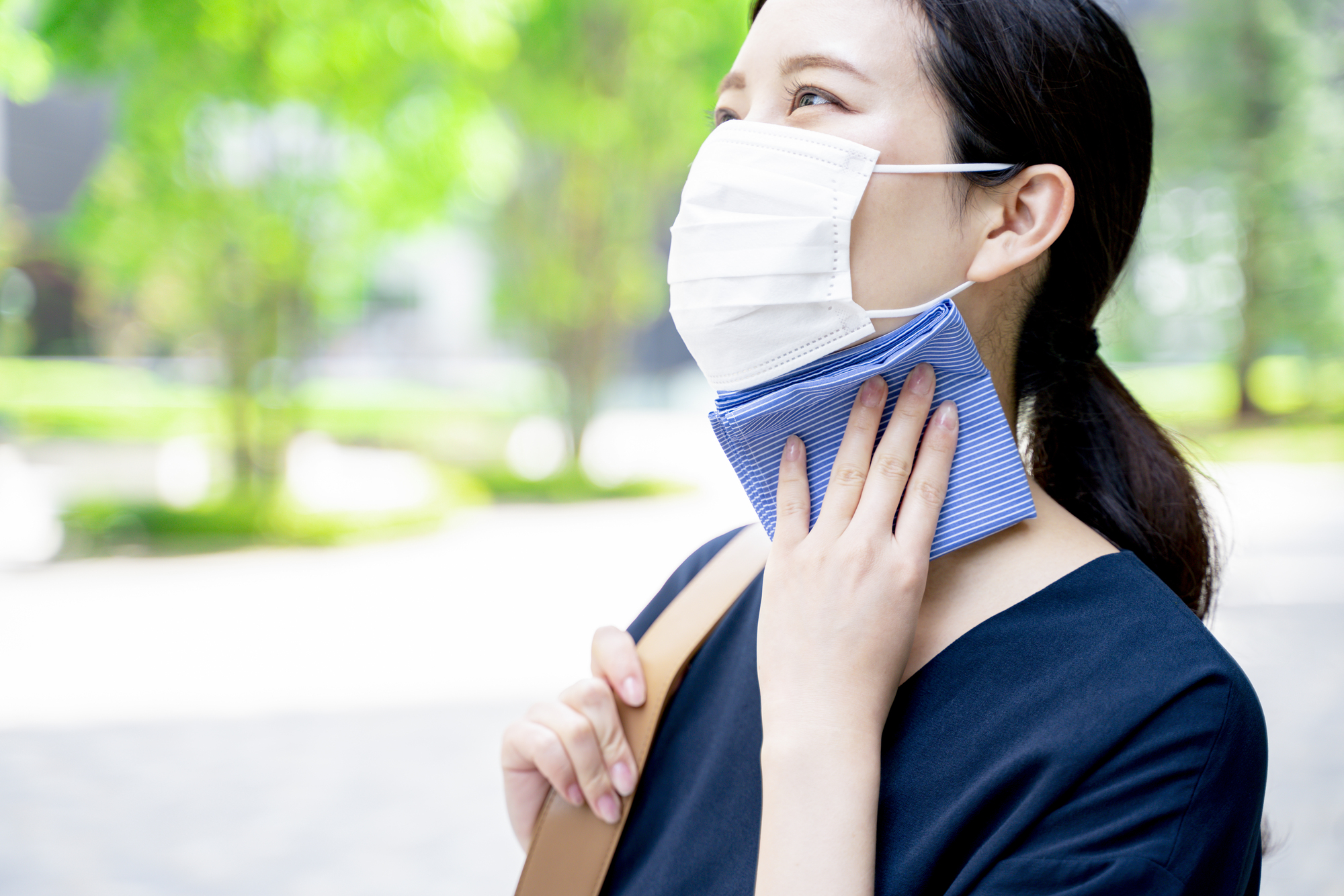
A handkerchief or towel is a surprisingly versatile item to carry while traveling.
Besides wiping your hands or face, it can also be used to cover or press a wound in case of an emergency — making it a simple yet extremely practical item to keep with you at all times.
A mask is another essential item, especially in Japan where natural disasters such as volcanic eruptions may occur. It helps protect your respiratory system from volcanic ash or smoke during emergencies.
If you plan to climb Mt. Fuji, particularly via the Subashiri Trail or Gotemba Trail, bringing a mask is highly recommended.
These routes include a section known as Sunabashiri, where fine volcanic ash and dust often swirl in the air — remnants from the 1707 Hoei eruption of Mt. Fuji.
Wearing a mask helps prevent irritation to your eyes and respiratory system, ensuring a safer and more comfortable climb.
Want to learn more about hiking Mt. Fuji via the Subashiri or Gotemba Trail? Click here!
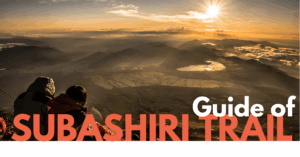

Rain Gear and Cold Weather Clothing
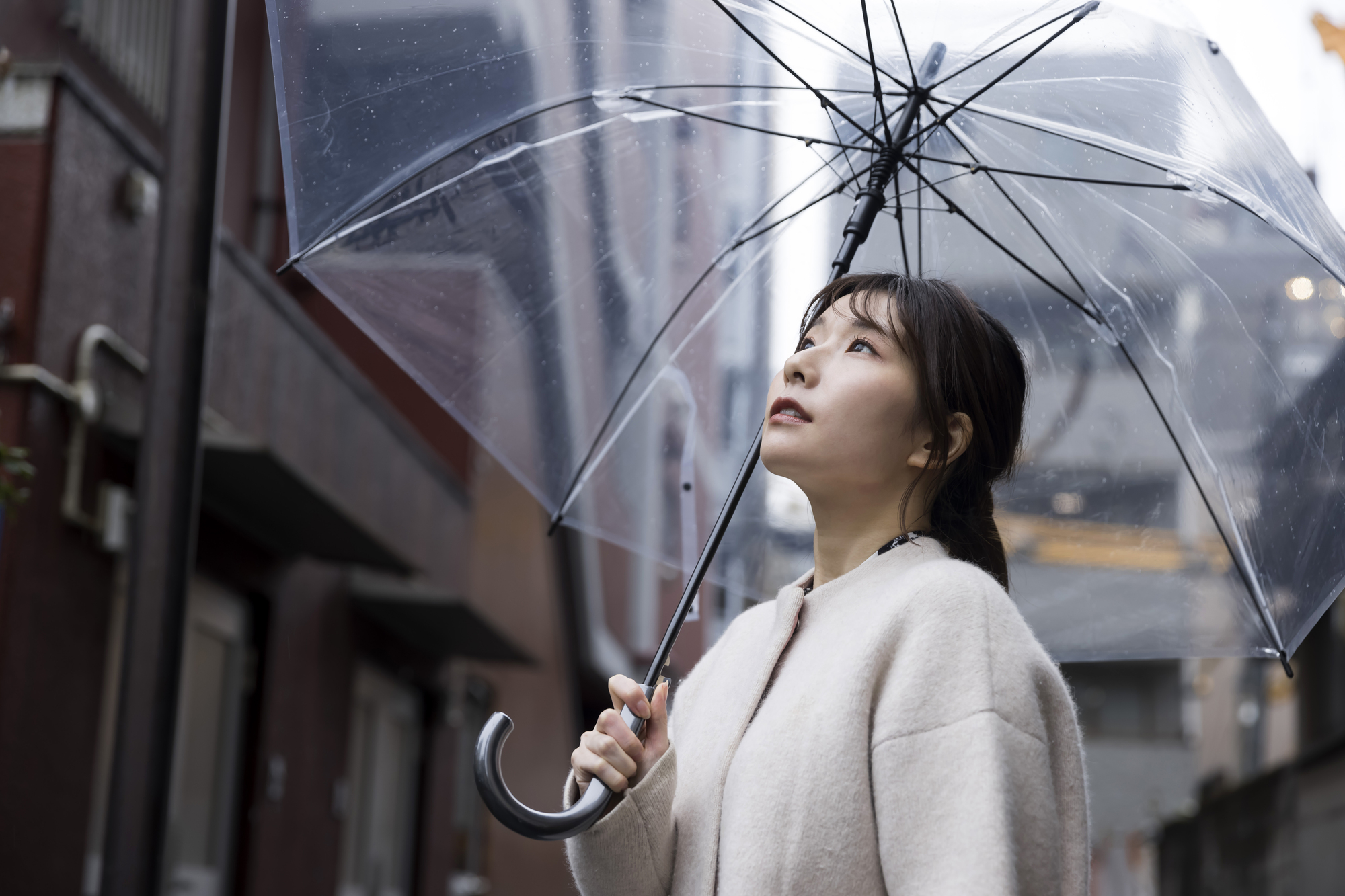
Yamanashi Prefecture lies in an inland basin surrounded by mountains, which means the weather can change suddenly due to shifting wind patterns.
To stay prepared, it’s best to carry a raincoat or a compact folding umbrella wherever you go.
During winter, make sure to pack warm clothing such as a jacket, gloves, and a hat. These will help protect you from the cold and allow you to enjoy your trip comfortably even in chilly conditions.
If you’d like to check local weather conditions before heading out, live cameras are an excellent resource.
At JAPANOPIA FUJI, we provide a curated list of live camera feeds from every city and town in Yamanashi, including stunning views of Mt. Fuji.
You can also check road traffic updates, seasonal flower conditions, and even cherry blossom forecasts — all useful tools for planning your trip.
👉 Check the live cameras here and make your Yamanashi journey even smoother!

What to Do During an Earthquake: A Step-by-Step Safety Guide
Japan sits on the boundary of several tectonic plates, making it one of the most earthquake-prone countries in the world.
For travelers, knowing how to stay calm and act appropriately during a quake can be crucial to protecting your life.
Here’s a simple, scene-based guide to help you respond safely if an earthquake occurs during your stay in Japan.
If You Are Inside a Hotel or Accommodation
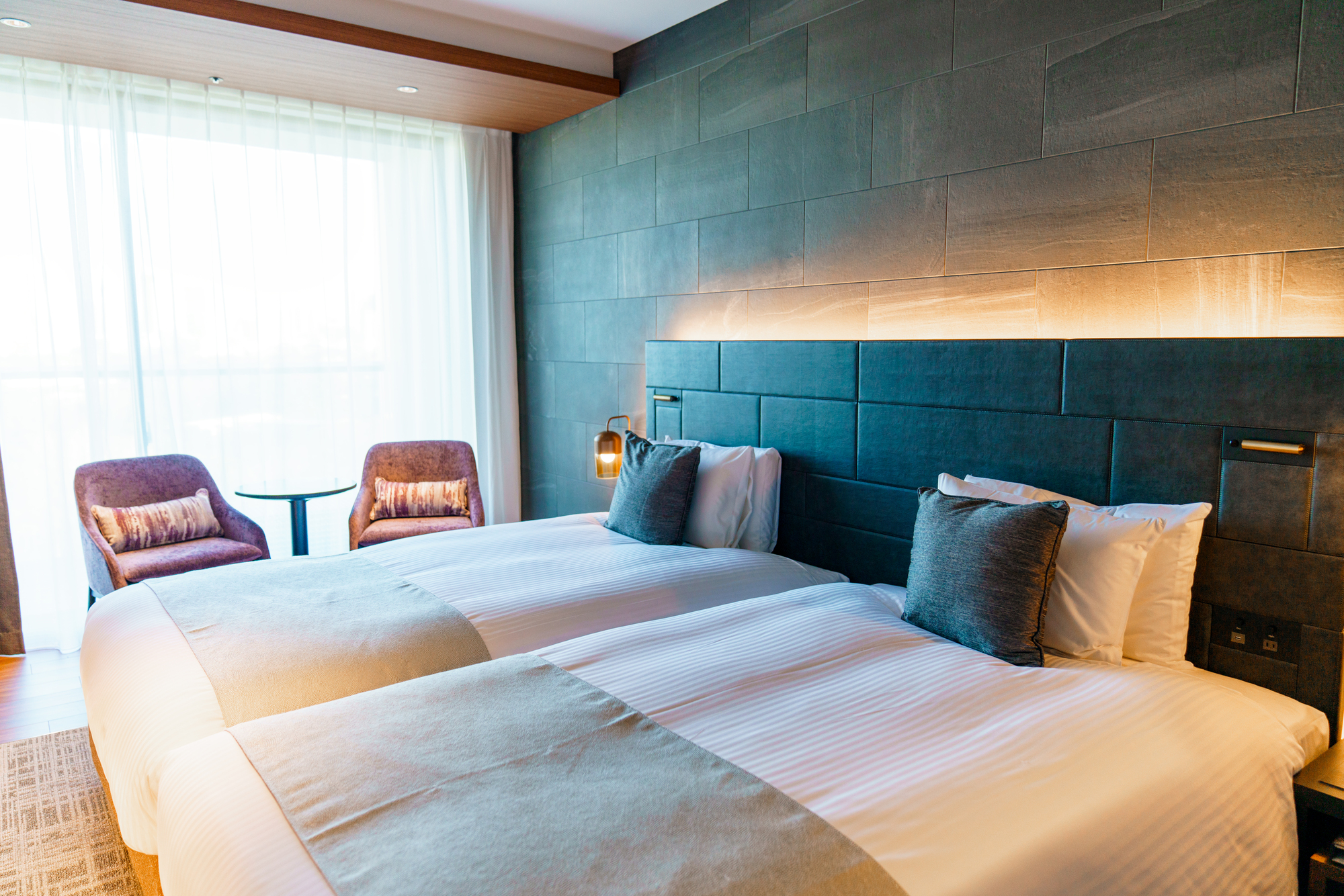
If You Are in a Supermarket or Shopping Mall
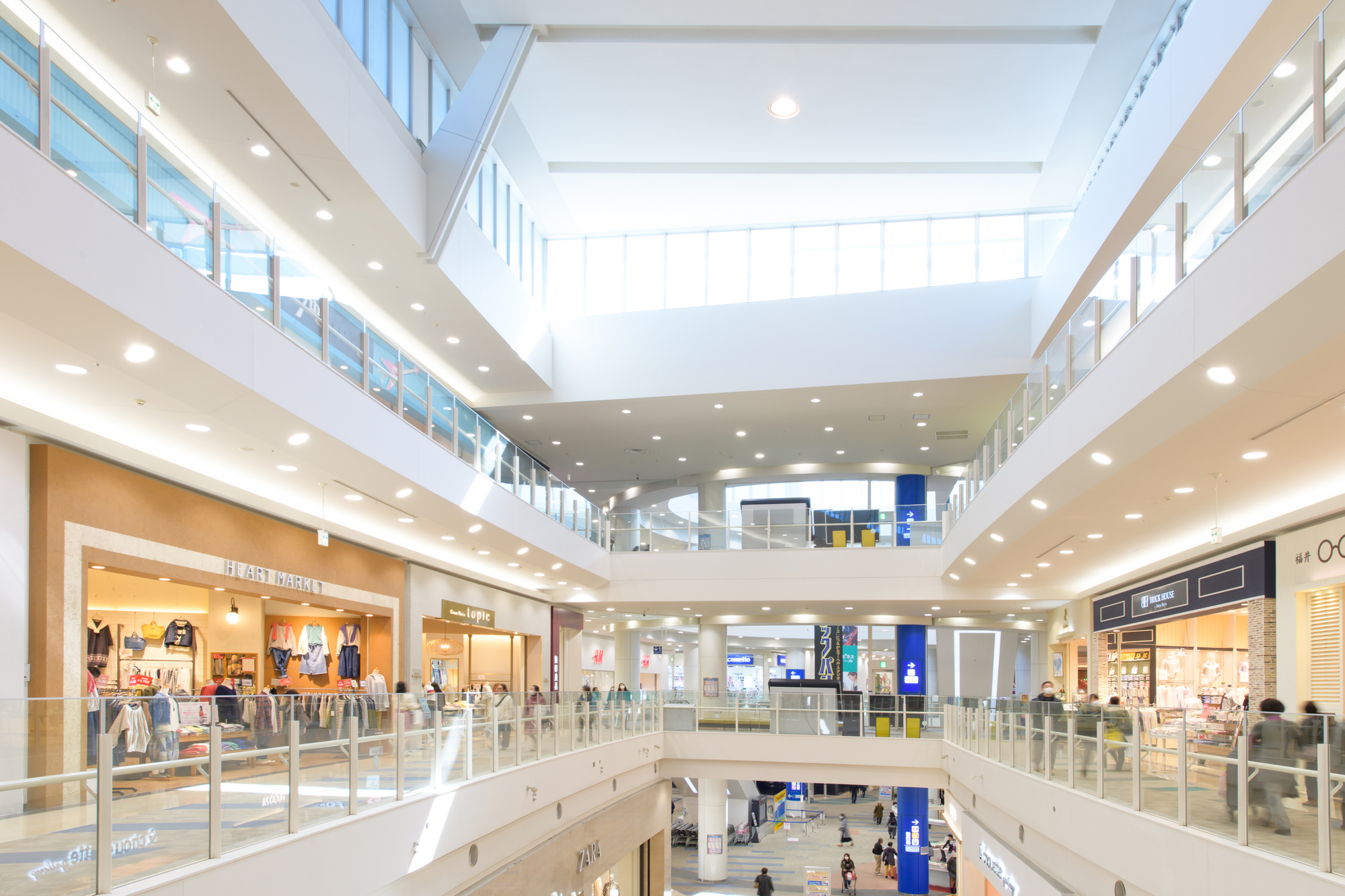
If You Are on a Train or Bus
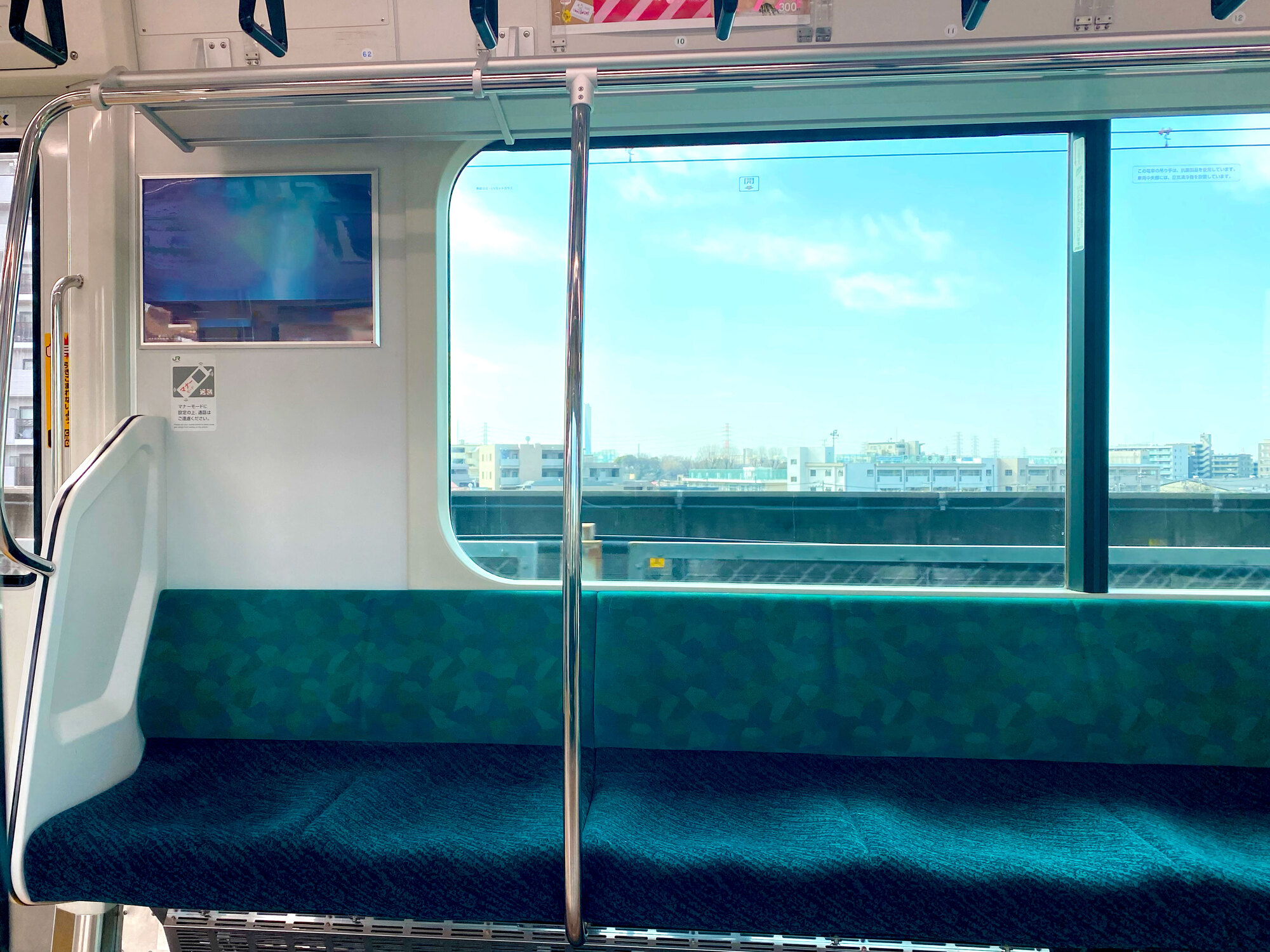
If You Are Hiking or Climbing
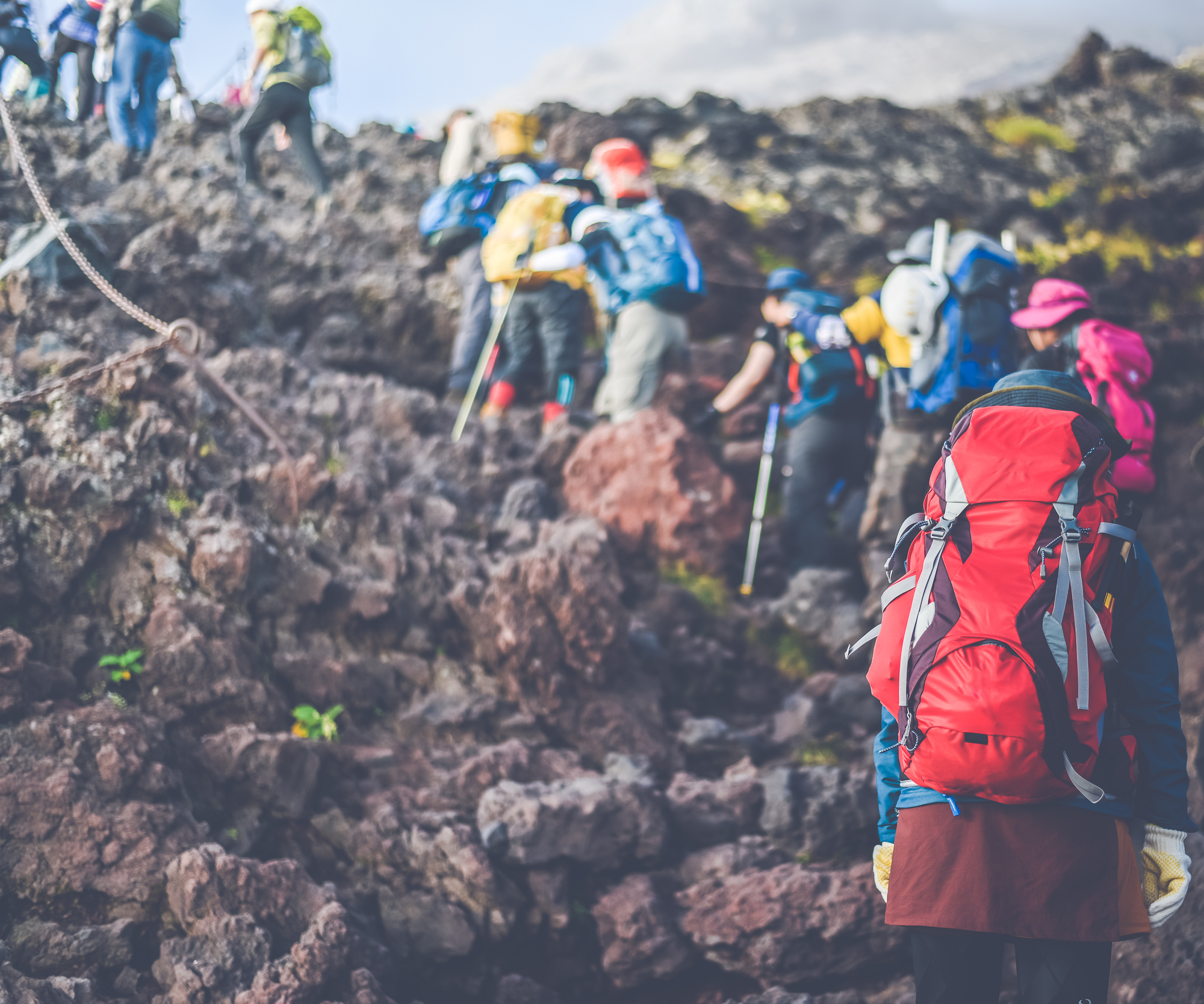
Stay Worry-Free During Typhoon Season!
Top Recommended Hotels in the Mt. Fuji Area for Rainy or Stormy Days
Weather can greatly influence how much you enjoy your trip. During typhoon season or periods of unpredictable weather, it can be disappointing when outdoor plans don’t go as expected.
That’s why we’ve carefully selected some of the best accommodations around Mt. Fuji where you can stay safe, comfortable, and entertained indoors—even when the weather turns bad.
GLAMPING VILLAGE FUJI KAWAGUCHIKO
GLAMPING VILLAGE FUJI KAWAGUCHIKO offers a luxurious glamping experience where you can enjoy the beauty of nature without compromising comfort or safety.
Each private villa features a fully covered BBQ area, allowing guests to enjoy outdoor dining even on windy or rainy days.
For extra peace of mind, the nearby Michi-no-Eki Narusawa Roadside Station—just a 15-minute walk away—also serves as a designated emergency evacuation site. This makes it one of the most secure and traveler-friendly glamping facilities in the Mt. Fuji area.
Guests staying in the Suite Villas or Deluxe Villas can indulge in private indoor hot springs and saunas, making it possible to relax and unwind no matter the weather.
The sturdy construction of each villa ensures a safe, quiet stay, allowing you to enjoy nature and comfort at the same time—even when it rains outside.
Spend your stay surrounded by nature while enjoying amenities designed to keep you cozy and relaxed, whatever the forecast may bring.
Want to know more about GLAMPING VILLAGE FUJI KAWAGUCHIKO? Click here!
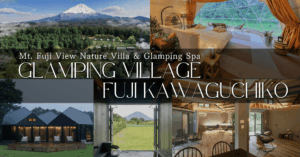
HAKU FUJI YAMANAKAKO
HAKU FUJI YAMANAKAKO, newly opened in 2025, is the latest addition to the Mt. Fuji area’s luxury accommodation scene.
This innovative hotel offers one-of-a-kind experiences that blend breathtaking scenery, modern Japanese aesthetics, and exclusive in-room entertainment.
Guests can enjoy panoramic views of Mt. Fuji, immerse themselves in tranquil Japanese-inspired interiors, and even savor a private Kaiten sushi experience — a feature unlike any other hotel in Japan or abroad.
🗻 4F Super Suite “Fuji Sokan” (Panoramic View of Mt. Fuji)
The top-floor Super Suite “Fuji Sokan” offers an awe-inspiring view of both Mt. Fuji and Lake Yamanakako.
Relax in the spacious living room while admiring the majestic scenery — a perfect setting for a special getaway.
🍵 3F “Yamanakako Soan” (Japanese Tea Room Suite)
The “Yamanakako Soan” suite comes with its own traditional tea room, allowing guests to experience the refined beauty and serenity of Japanese culture.
It’s an ideal retreat for those seeking calm and quiet moments.
🍣 2F “Yamanakako Enyu” (Private Kaiten Sushi Room)
A world first — the Private Kaiten Sushi Room “Yamanakako Enyu” lets you enjoy a rotating sushi experience inside your suite.
Perfect for families or friends, this playful yet luxurious concept brings together culinary art and private relaxation in a way found nowhere else.
🍸 1F Lounge & Restaurant
On the first floor, guests can unwind at the complimentary lounge, offering 15 types of fruit liqueurs, or dine at the hotel’s restaurant featuring seasonal Yamanashi ingredients crafted by an experienced chef.
Enjoy both breakfast and dinner in a refined, intimate setting.
For added peace of mind, multiple designated evacuation shelters are located within walking distance, ensuring safety even in emergency situations.
HAKU FUJI YAMANAKAKO is the perfect choice for travelers who value comfort, creativity, and cultural immersion — a destination where you can relax both body and mind while experiencing a truly extraordinary stay.
Want to know more about HAKU FUJI YAMANAKAKO? Click here!
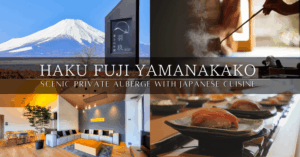
Hotel Kaneyamaen
Nestled at the foot of Mt. Fuji, Hotel Kaneyamaen is a renowned luxury resort celebrated for its sprawling 25,000-tsubo (approximately 82,500 m²) Japanese garden — a serene oasis where guests can experience the beauty of Japan’s four seasons.
The hotel features both indoor and open-air hot spring baths with unobstructed views of Mt. Fuji, as well as saunas and private baths.
Here, guests can indulge in the ultimate relaxation experience, soothing both body and mind while surrounded by stunning natural scenery.
Hotel Kaneyamaen is also celebrated for its seasonal Japanese cuisine, prepared with locally sourced ingredients from Yamanashi.
At the live kitchen, guests can watch the chefs in action and savor freshly prepared dishes in a tranquil and refined dining atmosphere.
Throughout the year, the hotel hosts a variety of seasonal events — from festival performances and taiko drum shows at the “Matsuri Plaza” to elegant live music evenings at the Night Bar Lounge.
Even on rainy days, guests can enjoy a rich program of indoor activities that reflect the changing seasons of Japan.
For wine lovers, the Yamanashi Wine Lounge offers a curated selection by an in-house sommelier, featuring the finest local vintages.
Guests seeking deeper relaxation can also enjoy luxury spa treatments, completing an unforgettable rejuvenation experience.
Summary
In this guide, we introduced practical safety tips for natural disasters and recommended accommodations in the Mt. Fuji area.
By keeping these points in mind, you can travel with confidence and enjoy your visit to Yamanashi, home to the UNESCO World Cultural Heritage site of Mt. Fuji.
Prepare smart, stay safe — and experience the timeless beauty of Japan’s sacred mountain for yourself.
Recommended for You! Featured Articles You May Also Like
-

Travel Safety Tips in Yamanashi: Disaster Preparedness & Recommended Hotels for Rainy Days
-



Yamanashi’s Local Gourmet! Food Trucks & Food Festivals Featuring Regional Delicacies
-



Packed with Local Gourmet & Souvenirs! Complete Guide to Yamanashi’s Roadside Stations
-


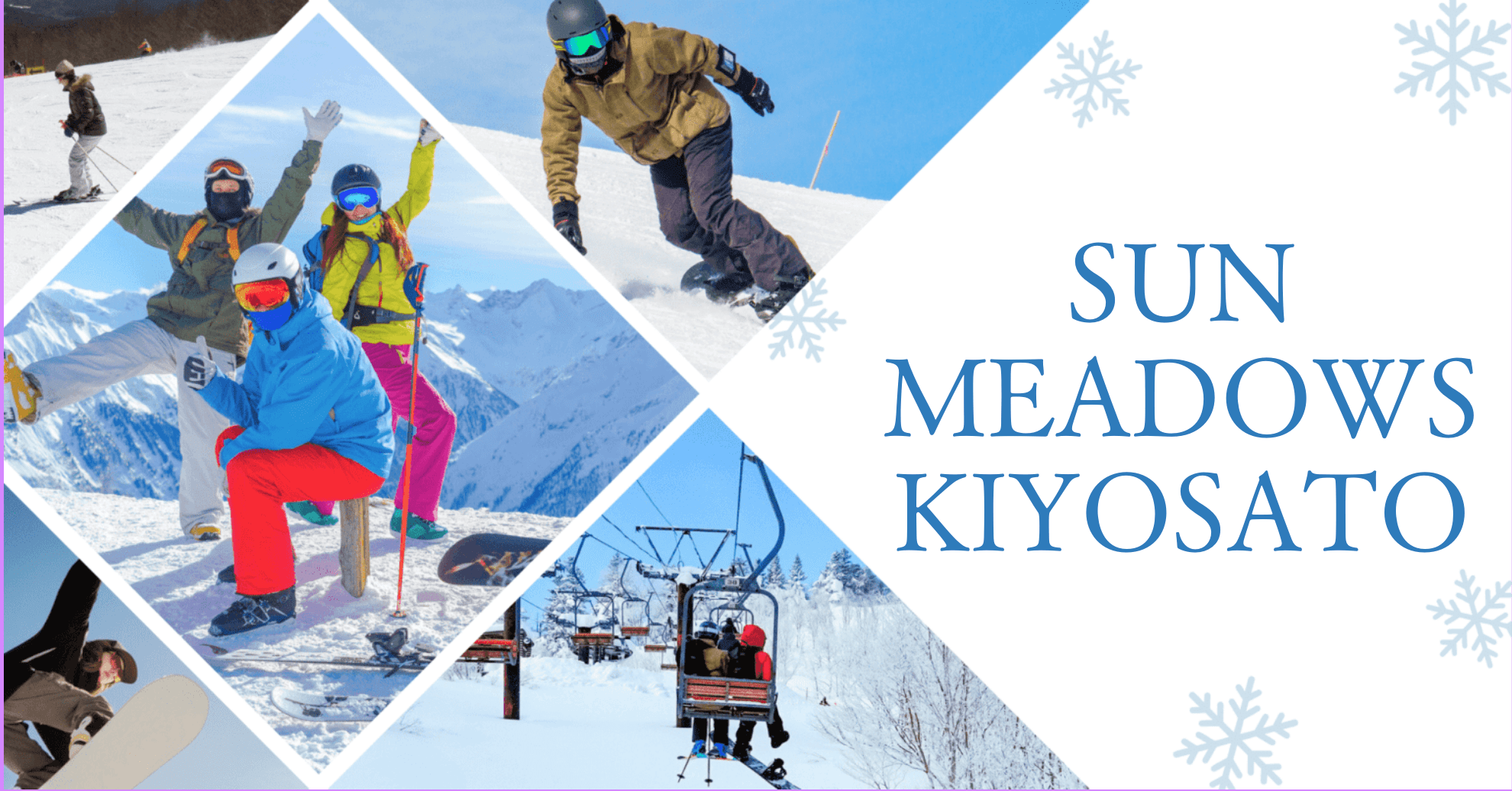
80% Sunshine Rate! Enjoy Winter Fun at “Sun Meadows Kiyosato Ski Resort”
-


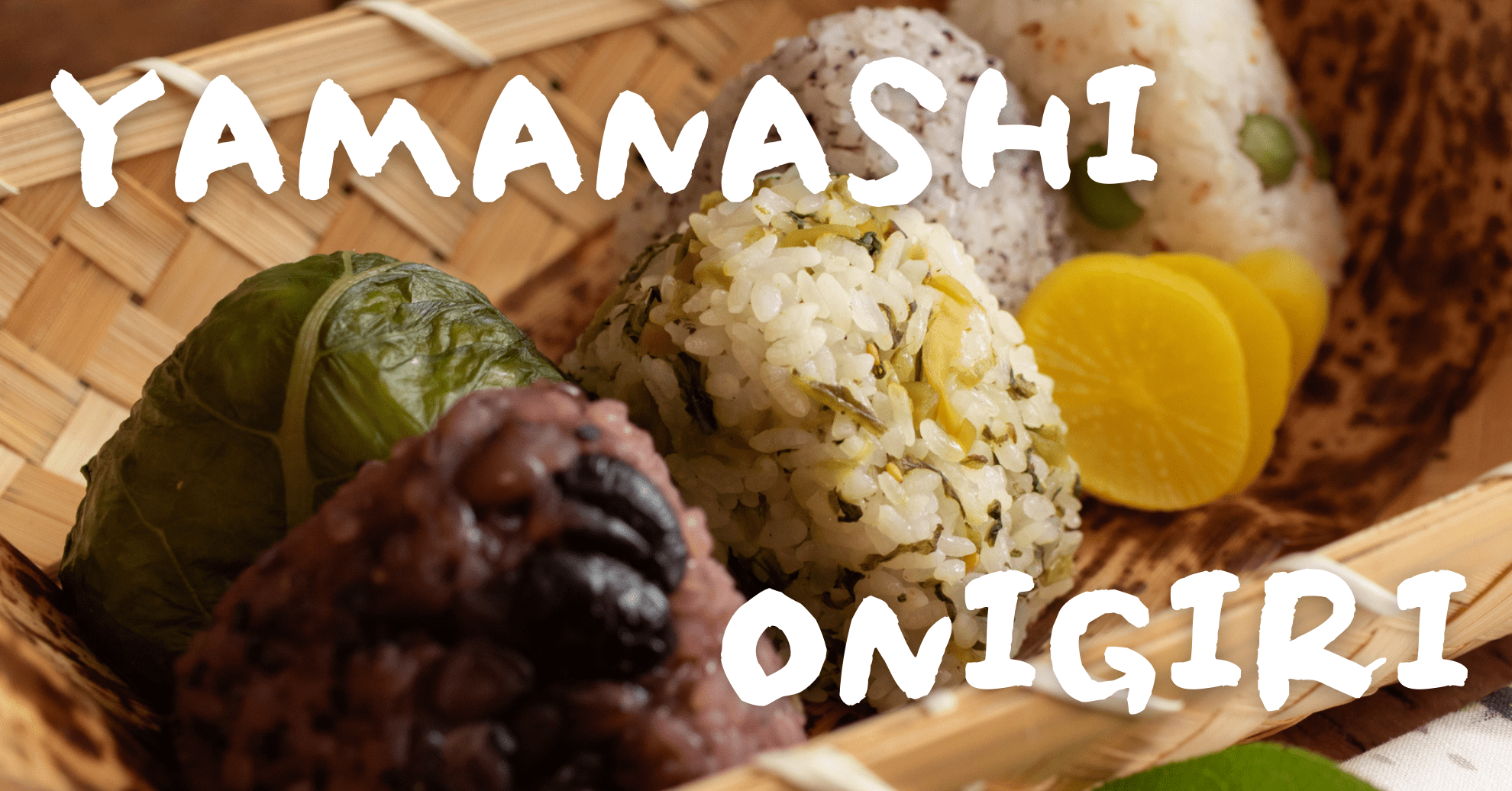
Unique Rice Balls from Yamanashi! Local Onigiri You Can Only Find Here
-


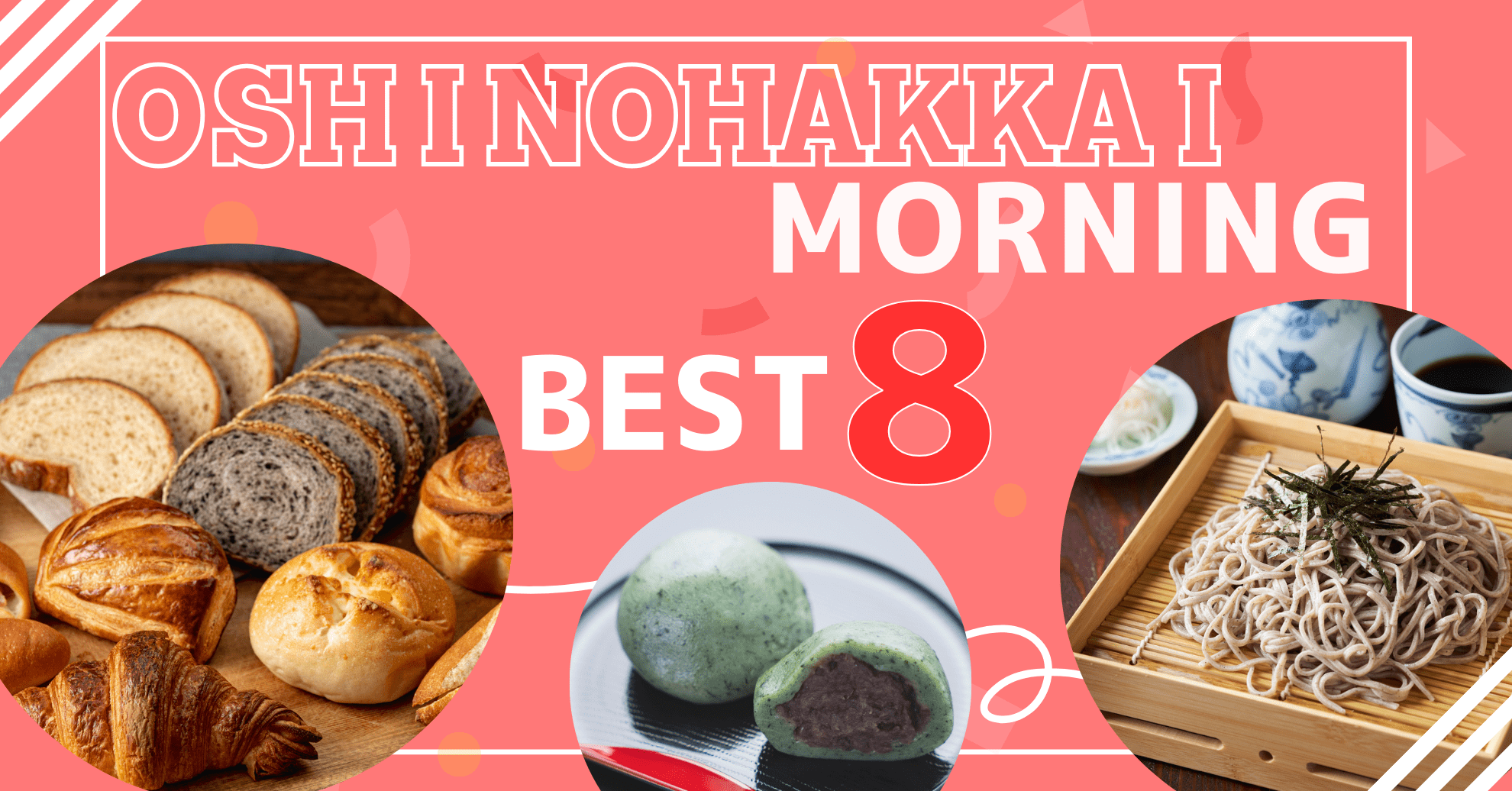
Best Morning Breakfasts at Oshino Hakkai: A Gourmet Morning Guide

